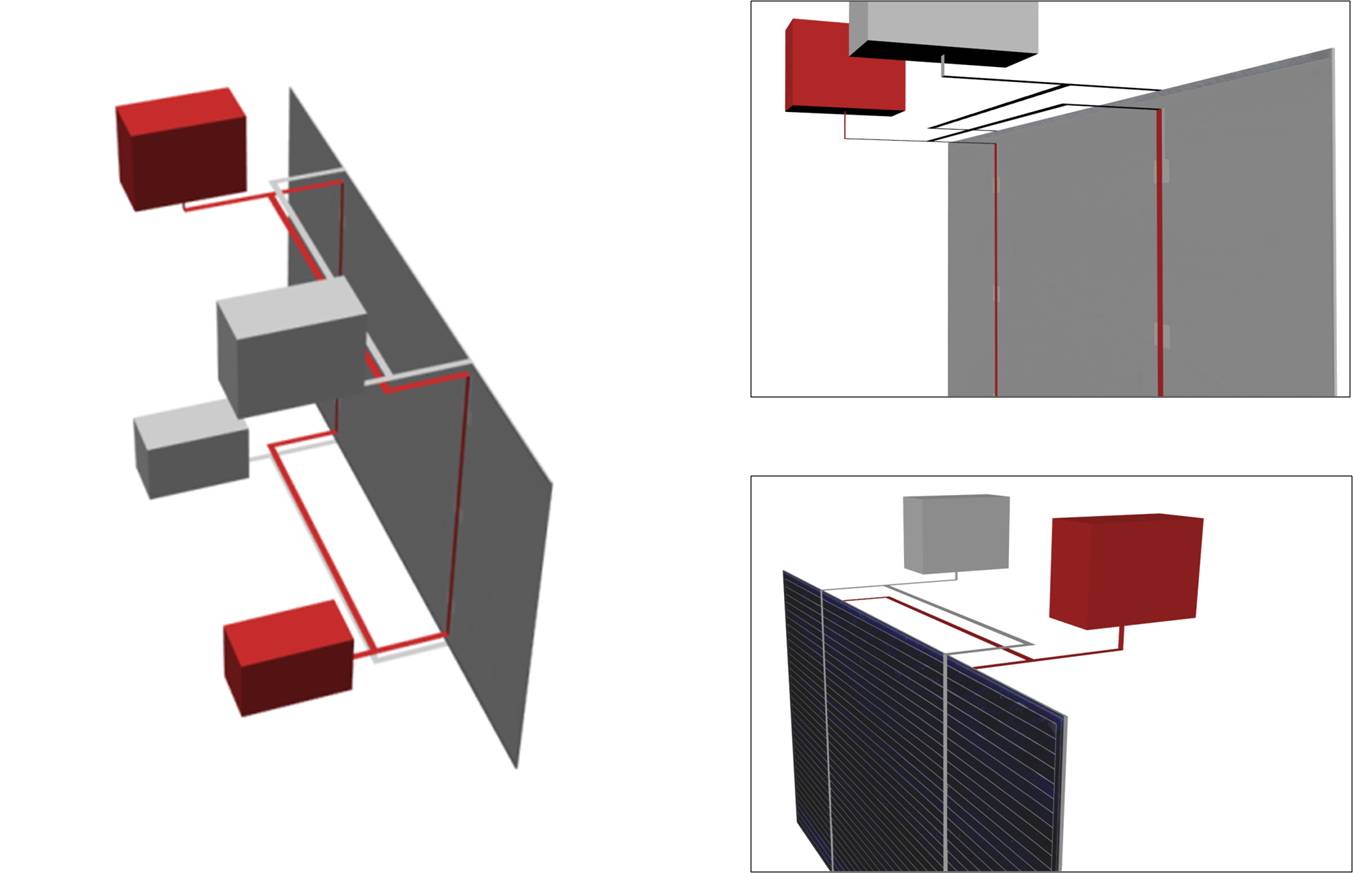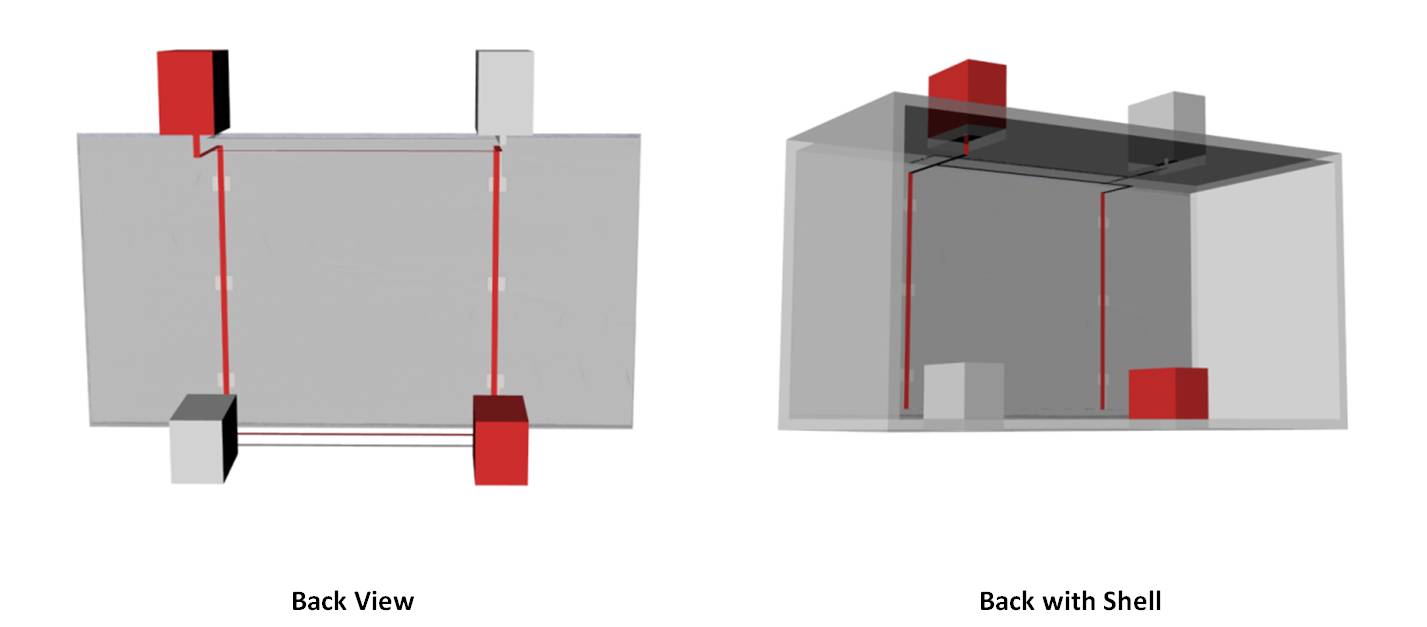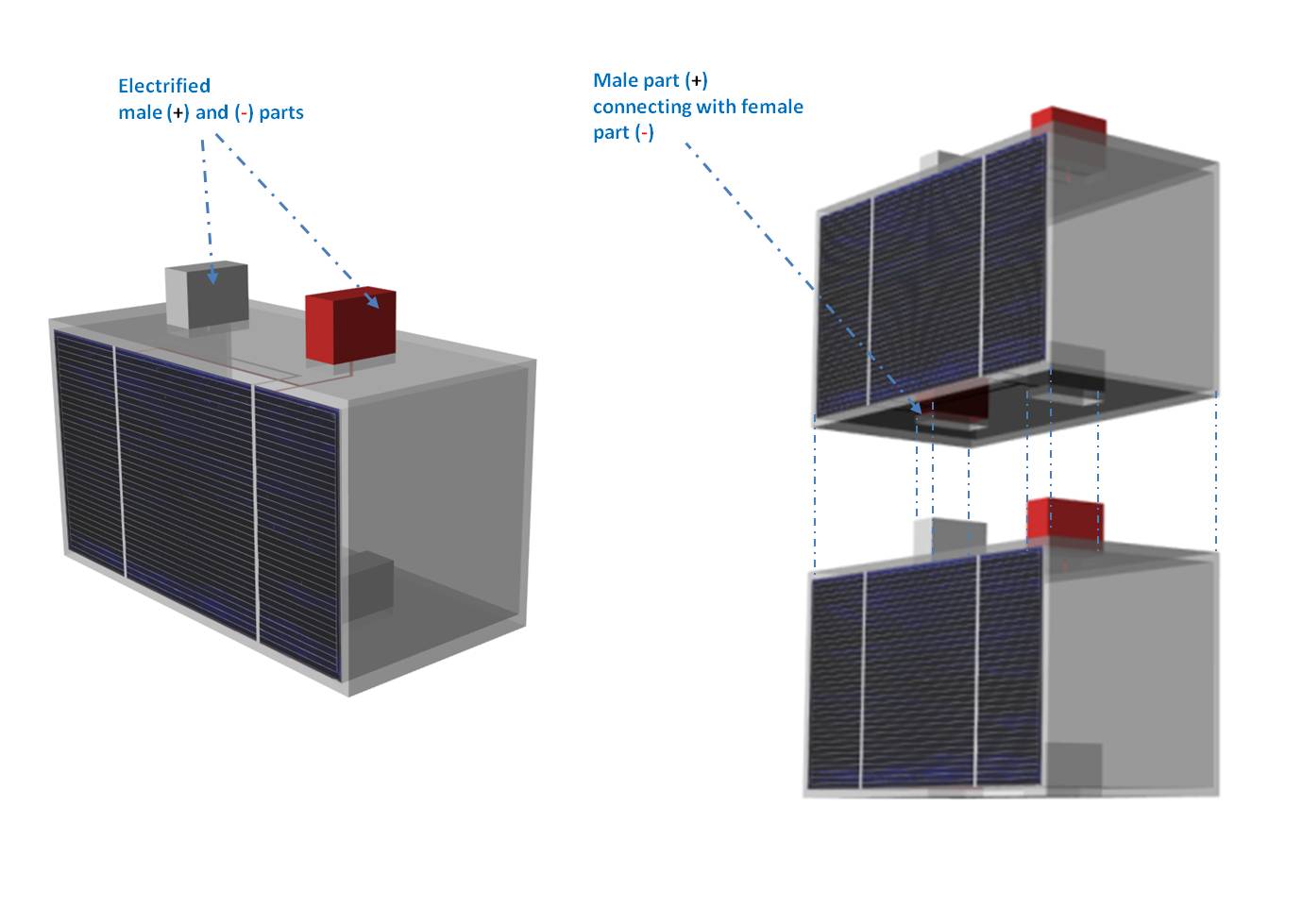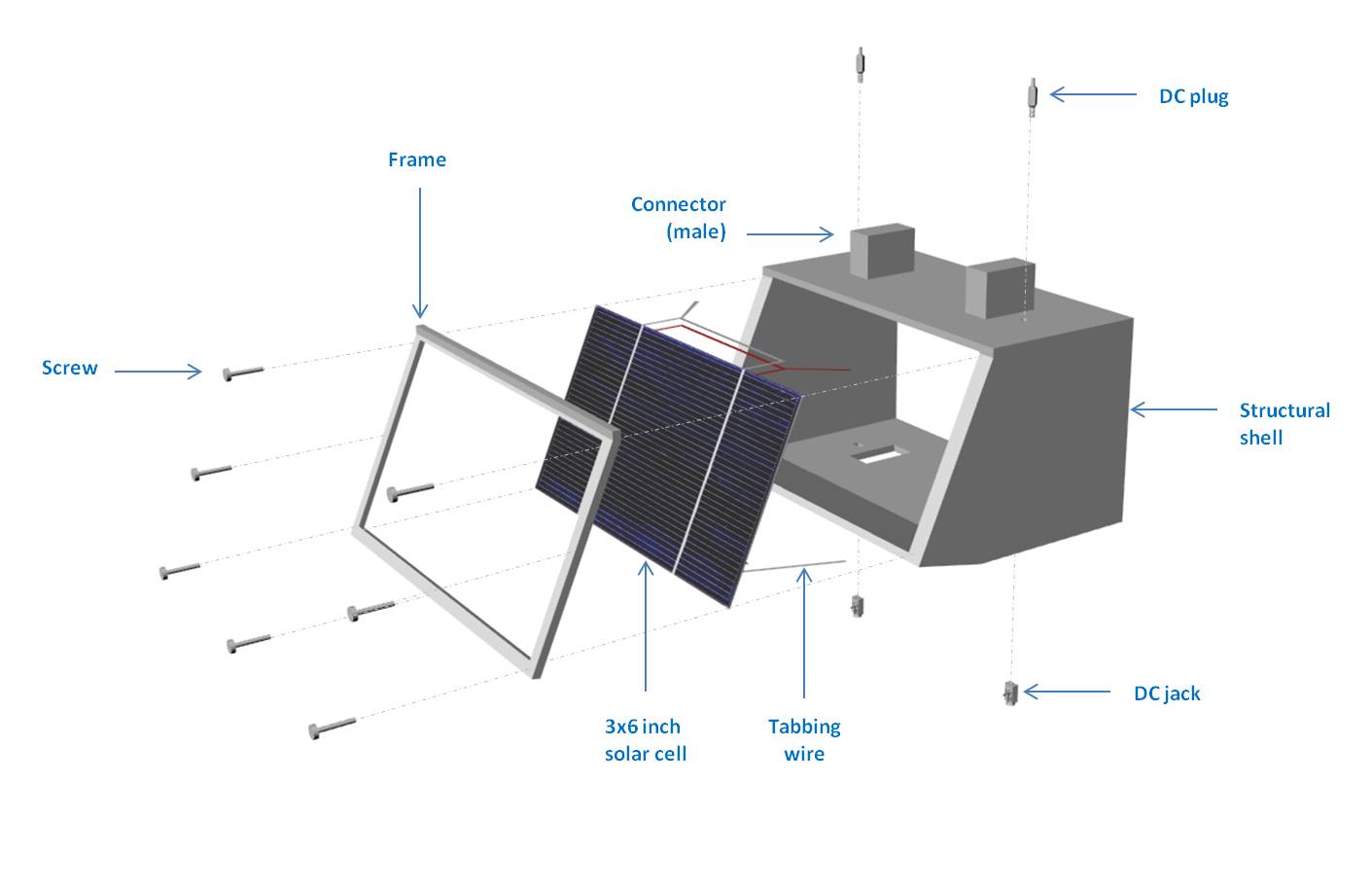Solar Masonry Unit
One crucial aspect of this project is figuring out how multiple bricks join together both structurally and electronically. Last week’s working prototype only addressed the electronics of one unit. The highest priority this past week was to address the project at a larger system level – both aesthetically and technically.
I was first interested in modeling the electronic connections of one unit. I wanted to first figure out how two cells would join together and wasn’t so interested in the form or body.
Since typical solar cells are strung together in series, where the soldered tabbing of the front of the first cell (which is the negative side) is soldered to the back of the next cell (the positive side) understanding how this would work as stacking units was a major challenge.
Modeling both the cell and tabbing in Rhino allowed me to explore several connection opportunities.
Once I was convinced of an electronic connection method, I modeled a simple structural body that housed and framed the electronics.
After the both the form and electronics were modeled of one unit, I could stack multiple units together and begin to understand the project at a system level.
Modeling an entire wall allowed me to assess the aesthetics of the complete system.
I wasn’t convinced that a flat, vertical surface was working both electronically (efficiency of the solar cell) or aesthetically (static appearance).
I modeled a different version of the unit with a sloping (60° angled) face. Additionally, after speaking with Mark, I wanted to explore the opportunity of having a two separate connections – one structural and one for the electronics (a standard DC jack). This was for several reasons. Firstly, my initial connection system depended on custom connection tabs. Secondly, the initial system combined the structural system with the electronic system. This would most likely put unwanted strain on the electronics. This new version separated the two systems.
There were several aspects of the project that have not been resolved yet. I still need to figure out where the USB receptacle will be placed. I envision the unit to be a double sided system where the front (exterior side) harvests the energy, and the back (interior side) can be plugged into for power. I have not modeled or addressed the back side yet.








